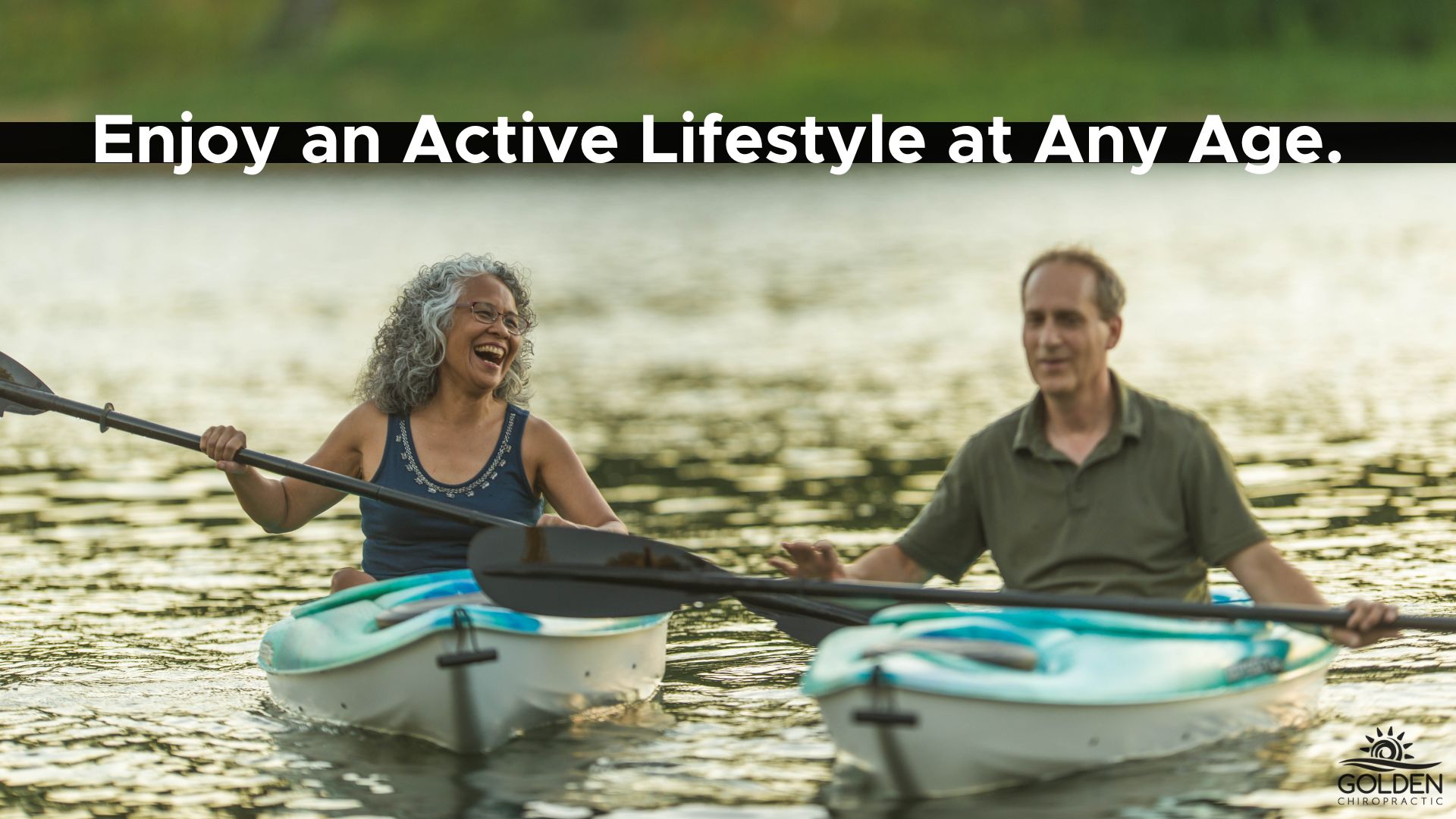
08/22/2024 by Dr. Goldi Jacques-Maynes
Active Lifestyles After 40 Require Some Adjustments
Understanding how your body is changing as you age, and what you can do to maintain fitness, are the keys to staying active at 40, 50, 65, and beyond.
When it comes to exercise and sports, the rules change as you age.
Our bodies are always changing, and after 40, those changes require certain lifestyle adjustments.
After 40, your athletic performance begins to decrease. After 65, you really need to carefully consider your fitness activities to stay active and avoid injuries like broken bones.
If you want to maintain an active lifestyle, you need to come to terms with these changes. By making the necessary adjustments, you'll reap fitness' rewards and avoid painful injuries.
Here's a list of 6 ways your body changes as you age, and what you can do about it.
1: Your joints grow stiffer as you age.
Why? Because your joints lose hydration. Sadly, drinking more water won’t fix this problem.
As you age, your cartilage wears down and your joints don’t slide as well as they used to.
You lose range of motion as your ligaments and tendons grow more rigid and brittle.
When it comes to your joints’ range of motion—move it or lose it.
To help offset this change, find ways to move your joints through a full range of motion everyday. You could try:
- making circles with your arms, legs, ankles, and wrists
- making sure all your joints move in every direction they are meant to
- trying this 4-minute warm-up as a good place to start moving your joints
- doing a practice like yoga that encourages movements you don’t do throughout your regular day. Our senior patients have been telling me about Yoga Vista as a great source of online classes.
Never train into pain (good advice at any age).
Avoid activities that cause your joints to swell or that cause pain. Pushing through painful activities will result in injuries over time. Those injuries can mean more time spent healing, and less time being active.
Work with your healthcare provider to make the appropriate lifestyle changes.
Dietary changes, weight loss, and supplementation may also help. Talk to your preferred medical provider for advice on keeping your joints in motion with nutrition and weight management.
2: You begin to lose muscle at age 30.
The number of muscle fibers, as well as the size of muscle fibers, progressively decreases as time goes on. As you lose muscle strength, you place more strain on certain joints. Your knees especially are at risk of arthritis.
Slow down this process by continuing to build muscle.
Build muscle through strength and resistance training.
After 65, it's vitally important to exercise to build muscle mass and strength to improve mobility and balance. The effort needs to be difficult enough to make a change, but not so hard that you injure yourself.
If you're over 65, consider bodyweight exercises to build muscles more safely than traditional weight lifting.
Start any new routine with a certified professional, and under the care of a licensed medical provider. This will ensure that you’re starting at the right pace for your body.
Also consider increasing protein in your diet. Proteins are the building blocks of muscles.
3: You begin to lose endurance and stamina after the age of 40.
You can maintain your endurance, and even improve it. The key is cardiovascular exercise.
Get your heart rate up to increase your endurance.
Rowing, biking, and swimming are good for exercising your heart and lungs.
Walking can work, but as a low impact activity, it also has lower cardiovascular benefits. If you need to walk, try to step up your pace to get your heart rate up. You may also consider hiking or climbing hills.
Cycling and swimming work for folks with degenerative joint disease in their knees and spine. Sprinting maximizes muscle power, endurance, and stamina. Try intervals of fast and slow as you move through your cardio workout of choice.
4: Your metabolism slows down about 5% every 10 years after 40.
That means you burn calories more slowly. The mitochondria in your muscles die out as you age. Since the mitochondria convert food into energy, you burn fewer calories.
Building more muscle will encourage a more efficient metabolism.
More muscle means more calorie burning. Decreasing your calorie intake by 100 calories per day will also slow down weight gain.
5: You recover more slowly as you age.
Younger athletes can work out everyday, and even more than one workout in a day. That’s not true once you’re over 40.
Create a reasonable workout and rest schedule.
Consider:
- Limiting yourself to working out every other day.
- Alternating cardio days and weight training days.
- Having one cardio day, one weight training day, then one rest day
- Experiment and listen to your body to figure out what works best for you
6: Injuries are statistically more likely after 40.
You may not like it, but your body just doesn’t bounce back and heal quickly anymore. Time and patience are your friends when it comes to injuries.
If you're injured, back off fitness and get treatment so you can heal.
A muscle pull or a joint ache that lasts over a week needs to be evaluated. Treatment from your sports chiropractor, physical therapist or orthopedist can speed healing. These professionals can also develop a modified fitness program so you don’t start to lose your mind.
Invest in active rest.
Sitting still and waiting to heal is hard, even with the patience you have developed with age. A modified workout will be the answer. Be smart, modify and slow down for life-long health.
Incorporate regular warm ups into your exercise routine.
Try this 5-minute warm-up for injury prevention.
How does bodywork help keep you active as you age?
Chiropractic, massage and other bodywork techniques decrease the negative effects of aging.
- Chiropractic adjustments increase joint mobility and hydrate your joints
- Massage flushes out waste from muscles and stimulates blood flow to improve healing, recovery, and muscle building
- Myofascial blading relieves stiffness or limitations with active range of motion
- Craniosacral & Myofascial Unwinding assesses and treats tension in the cranium, spine, and musculoskeletal system
- Myofascial Cupping relaxes muscles, improves circulation, promotes healing through increased blood flow, and encourages muscle relaxation
The best mindset about aging? Embrace self-care.
The physical realities of aging can feel like a lot of bad news, but with the appropriate lifestyle modifications, you'll still feel good.
Aging gives us the opportunity to really learn and practice self-care. Not only is self-care healthcare, it is also a form of self-love that makes your life even more enjoyable.
Take care of yourself no matter your age, and life will be rewarding at every stage.
If you're wondering how to make the right modifications for where you're at in your fitness journey, make an appointment to come see us in Aptos. Our highly trained chirorpactors help you get on the best fitness track for you, and you’ll feel good in your body again.
